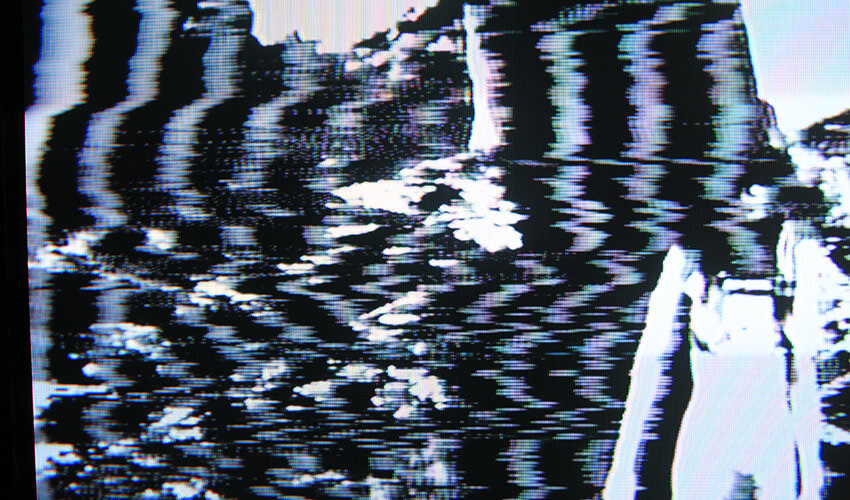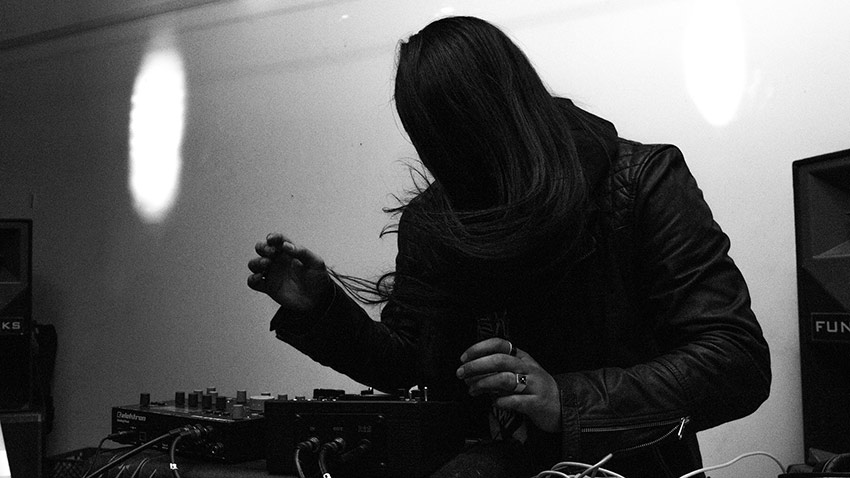Interview by Laura Netz

The L.A.-based producer Surachai released the album Come, Deathless on BL_K NOISE, the label he runs with Drumcell (Hypoxia), on January 25, 2019. Surachai’s Come, Deathless is a beautiful experimental LP which includes collaborative tracks with Aaron Harris of Isis (Ipecac Recordings) and keyboardist Joey Karam (The Locust). Come, Deathless synthesises live playing, field recordings (from the jungles and mountains of Thailand, California coastlines and various studios in Chicago), analogue synthesisers and heavy digital manipulation into a cohesive whole to express anxiety, sorrow, and defiance. Surachai’s Come, Deathless sounds aggressively metallic, with rhythmic oscillations of electronic synthesis.
Surachai was also the curator of Make Noise Records with Tony Rolando, which has released music by Richard Devine, Alessandro Cortini, and Hypoxia. Make Noise was founded in 2008, and it grew from a small amateur entrepreneur into a global manufacturing company. Although that, Make Noise keeps up a strong creative ethos. They mastery on what Tony Rolando names the biochemistry man-machine synthesisers, is demonstrated through the skills they have, not only as producers but also as curators and record label managers.
He also incorporates striking visuals in his shows and regularly collaborates with visual artists. In 2017, Surachai produced a short film for his Temple of the Weakening Sun LP. Using slow-motion and the Phantom Miro, a camera which turns a few seconds of footage into a few minutes, the main figure is presented in a nature-culture continuum in an energetic and transcendent ritual. Surachai’s Temple of the Weakening Sun presents a complete audiovisual work with a sculptured metal object, make-up, dressing and location.
It is a masterwork using music technology such as the TTSH, the Cwejman S1 MKII, the Arturia Beatstep Pro, the Prophet 6 and guitars. The result is a mysterious eroticism ritual, a sort of occult practice. Indeed, the use of metallic sounds coming from granular synthesis expresses a cosmic embodiment — an excellent work of modular and electronic synthesis based on rhythmic oscillations and complex modulations. Surachai quality results from hard work at all levels, with music, image, visuals, and other elements.
The video for An Unfamiliar Reflection Activates a Gate (featuring Aaron Harris) incorporates beautiful visuals, too. References to the ancient Arcadia and a taste for the past and decadence culminate in an expression of anxiety and pain. Distorted rhythmic oscillations and visual elements of a ritualistic occult embodiment of nature and human exemplify the relation with cosmic forces, through high frequencies, abstract complex patterns and visuals, unpleasant stroboscopic light effects and telluric dematerialised energies.

For the audience that is not familiar with your work, how and when does the interest in music production and music design come about?
It would start in anyone that has been moved by a piece of music, film, or photography and has a sense of curiosity about how it is created. Still moved by art and probably more curious today than ever before.
Your latest album, come deathless, reflects on chaos and struggle. What was the intellectual process behind its inception?
A reaction to chaos and struggle doesn’t take much intellectualizing. Those two require instinct and action to sustain or overcome. Otherwise, it will consume you. I don’t think there’s much to think about when the problems are clear – fortunately, I had an outlet, and unfortunately for you, you have heard it.
And what were the technical challenges during its development?
A challenge was when to say I was done. I still don’t think it’s ever done, but there was an urgency to release Come, Deathless while I was still in it. The record sometimes labels shelf your album for over a year. I’m a different human in 6 months, let alone 1 year. I would not relate to it after that period of time. Getting it out quickly is a challenge especially when there are a lot of physical moving parts like vinyl, cassettes, and pins – some of those take a few months to produce. But running BL_K Noise allows me that flexibility. We can do whatever we want.
Are you still involved in the Make Noise’s Shares system series? If so, What can we expect this year? the productions are always really ace! And if not, what has artistically meant for you to be involved in curating such a series?
Negative. My involvement stopped after MNR005 when the 7” series ended. It was a great experience working with the Make Noise team with that series, I’m proud of what we accomplished, and I’m happy they’re continuing their series.
The visual aspect is quite prominent in your work as well as in your albums and videos. What are your main influences and inspiration?
My influences and inspiration aren’t far from me. They’re the people that I’m surrounded by. If I don’t know them and am drawn to their work, I will definitely reach out. But as for “main”, there is no singular answer for that. If you’ve seen any of the artwork or videos, it’s easy to estimate where my aesthetic lies.
Your productions also seem infused with a sort of ritualistic mysticism. How you convey spirituality and technology?
These are a side effect of working with the same equipment as everyone else and in similar environments – but having a specific style and aesthetic to how I approach and navigate things.
What’s your favourite time of the day?
When I’m not talking about myself or when I’m learning about something.
What’s your chief enemy of creativity?
Thinking too much / intellectualising.






